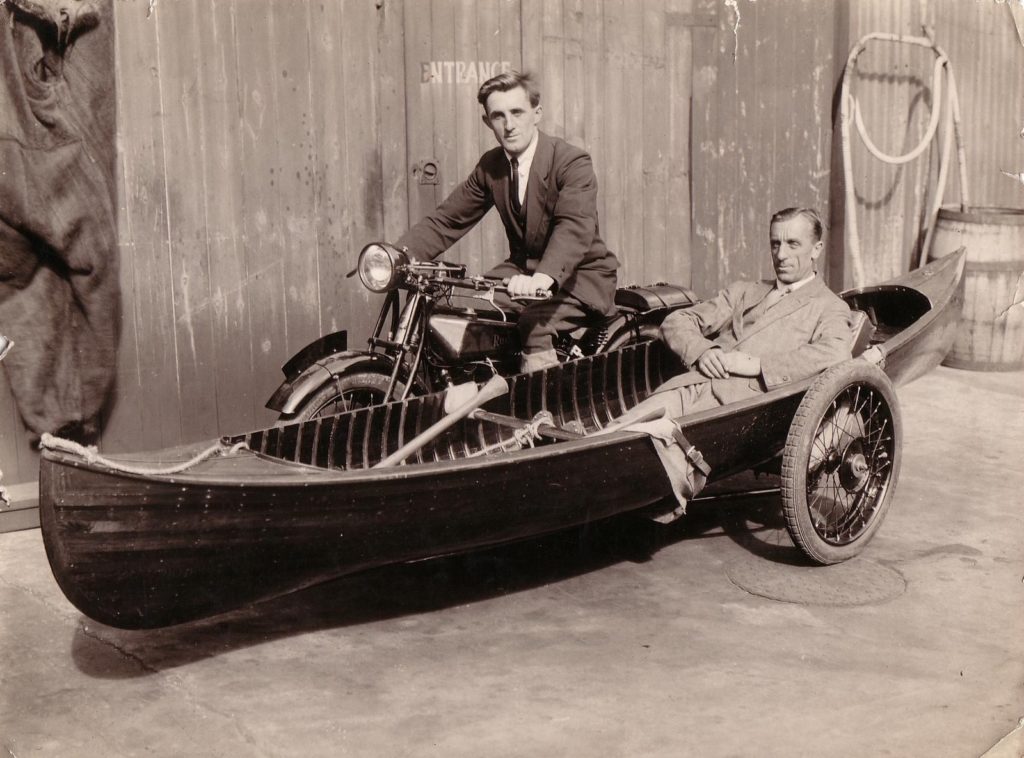
To demonstrate the soundness of the whole combination (with the canoe, at least), Rudge Managing Director John Pugh arranged for G.E. ‘Ernie’ Nott, factory tester and racer, to enter such an outfit in the Birmingham Motorcycle Club’s ‘Victory Trial’ on March 7, 1925. Nott was a tough character, with a nose like a prize fighter, and was accustomed to the pounding of Brookland’s pavement. Nott won a Bronze medal in the Trial, with a little help from other Rudge team members on the really tight bits. The three fellow teamsters rode solo Rudges, and won a Gold and two Silvers as well, but clearly had time to help “manhandle the outfit sufficiently for him [Nott] to negotiate the more difficult parts of the course” [The Story of Rudge, Hartley, 1985]. Not many trials courses allow for a twenty foot turning radius!
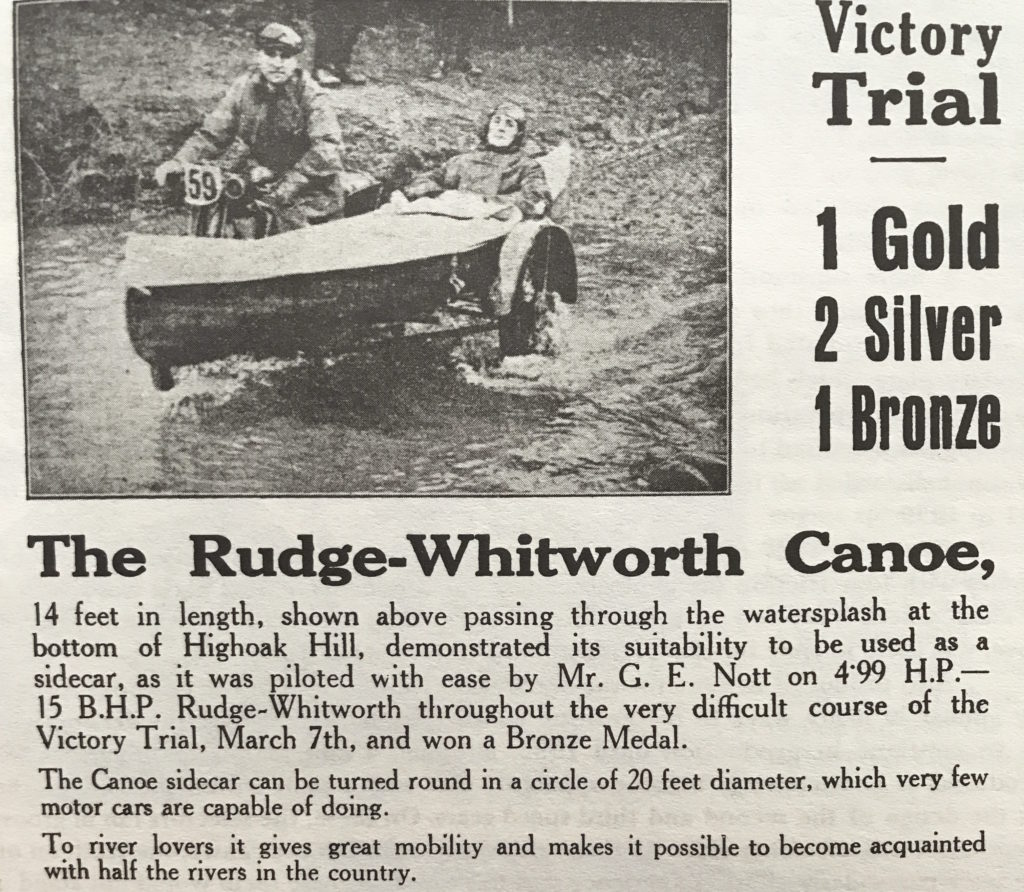
Remarkably the Canoe was offered with either the 350cc (’10hp’ – £58) or 500cc (’15hp’ – £64.6) capacity machine, with Electric Lighting Set via an ML ‘Maglita’ an extra £5. Salter Brothers of Folly Bridge, Oxford sent along a photo of Rudge and canoe/sidecar from their files; it’s possibly the very same canoe used in the Victory Trial, shown at the Works before delivery to Rudge-Whitworth. As far as we know, this photograph was never previously published, and is the best shot of the canoe itself, from the archives of the manufacturer. The construction of the boat is clear, with steam-bent ribs and mahogany planking, held together with brass nails, and varnished to a high gloss. Salter Bros is still manufacturing wooden ‘Canadian’ canoes such as this; thus, if one is so inclined, a brand-new Rudge canoe might be arranged with the original manufacturer! Food for thought… we’re huge fans of the things.
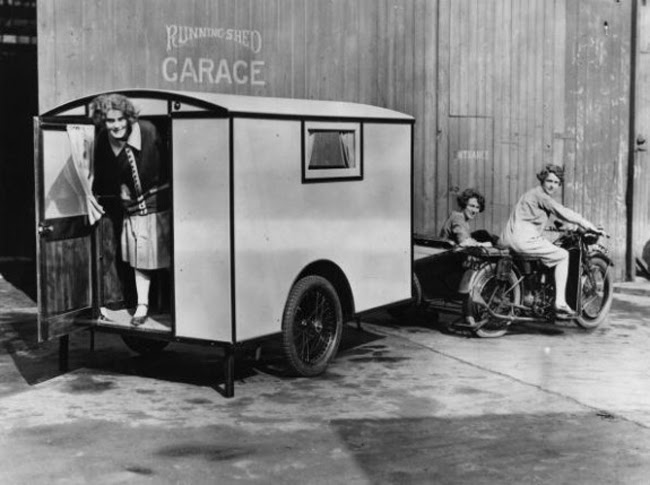
Another delightful photo of the canoe outfit shows ‘captain’ Ernie Nott at the helm, in far less arduous circumstances than the Victory trial – chauffering two Flappers to an open-water picnic. The ladies’ cloche hats and the Chinese paper parasol exemplify the period perfectly, although their thin silk dresses make for risky motorcycle gear. Ernie is taking no chances, and wearing a hearty Mackintosh! He looks well amused by the scenario, in any case. Note the thick canvas webbing which secures the canoe to the sidecar frame – the same system as on the Salter Bros. outfit. I think we can confidently assume that these canoes are one and the same, given the overall shape of the boat and construction details… and may well have been the ONLY Rudge canoe built, as there is some doubt whether any were actually sold.
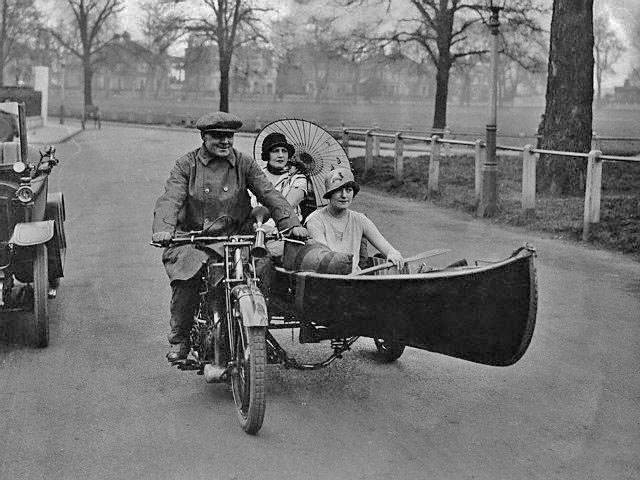
The Rudge Caravan was introduced for the 1927 model range, further exploring this uncharted territory for touring motorcycles. A complete outfit was offered, with Rudge 500cc ohv motorcycle and ‘Semi-Sports’ sidecar, plus the trailer, for £136.50. The Caravan itself was 7’3″ (2.23m) long 4’10” (1.5m) wide, and 4’7″ (1.4m) high. Inside were two small beds, a table, storage lockers, etc. Weight of the caravan was 285lbs, about the same as the solo motorcycle. It was recommended that cooking and washing occur outside of the trailer – cooking especially due to fire danger. A commercial version of the trailer was available, and were in use as late as 1944 delivering milk by the Coventry Co-op. When parked, the owner’s manual recommended the outfit’s tow-bar to be ‘lashed to the nearest hedge, and the rear corners fitted with ropes and pegged down’, with attention paid to the prevailing winds and likely course of the sun.
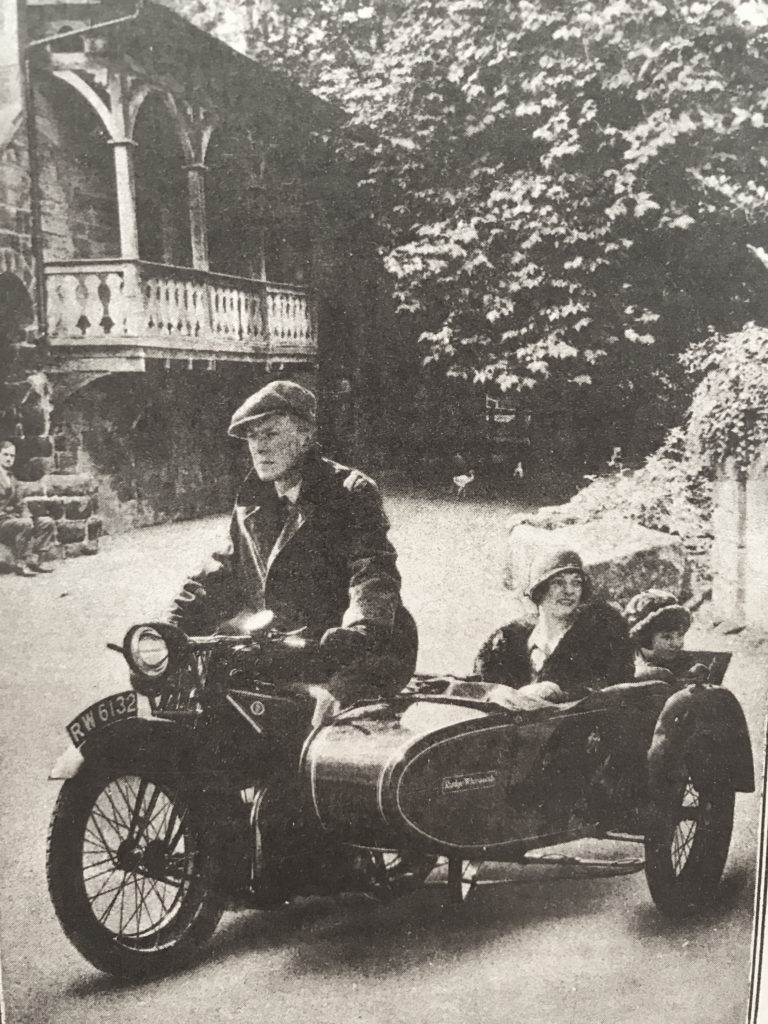
The all-up weight with motorcycle, sidecar, Caravan, rider, and any gear included must have exceeded 1000lbs, on a motorcycle still relying on ‘dummy rim’ external-shoe brakes, front and rear. Rudge was a pioneer in linked braking systems, i.e. the front brake was activated along with the rear when the brake pedal was depressed, and with the Caravan, two further brakes on the trailer wheels were activated as well. Yet the ‘dummy rim’ brakes used during those years by Rudge are marginal in normal use, very dodgy when wet, and impossible under a half-ton of load.
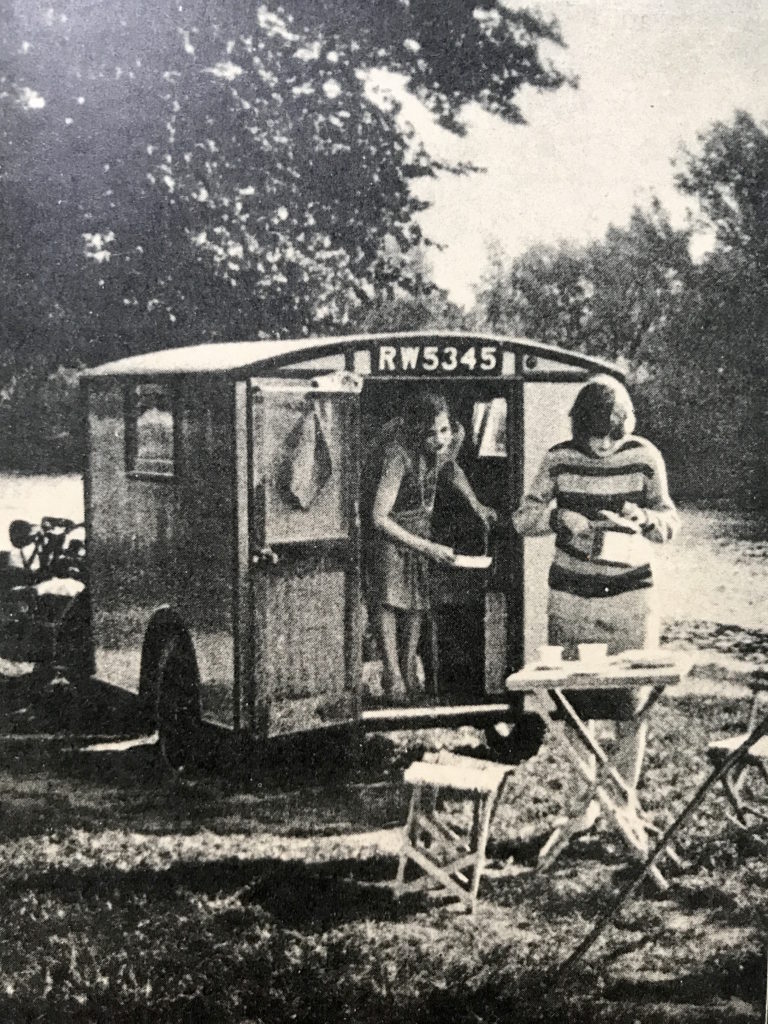
Anent this, a humorous story is included in Reynolds’ ‘Don’t Trudge It, Rudge It’ (Haynes, ’77); “Tyrell Smith was riding the [outfit with trailer] and together they were cruising at about 40mph when a constable stepped out from the side of the road to halt them. Tyrell hit the brakes hard but there was no chance of stopping the outfit in a hurry and it sailed on past the policemen and eventually stopped 100 yards further down the road. Seeing the problem, Ernie Nott [who was riding a spare racing bike behind Smith] pulled up beside the policeman to show that he interpreted the signal to apply to him. The policeman was not so readily convinced and he set off down the road, after the oufit, to accuse the rider of having no brakes. When the officer tried the time honoured method of testing the brakes, by pushing the oufit with the brakes applied, he couldn’t move it an inch, which is not surprising considering the weight it was carrying. He therefore let the riders go with a warning about being a bit more observant in the future. It was a good thing that he knew nothing of the effect of inertia!”
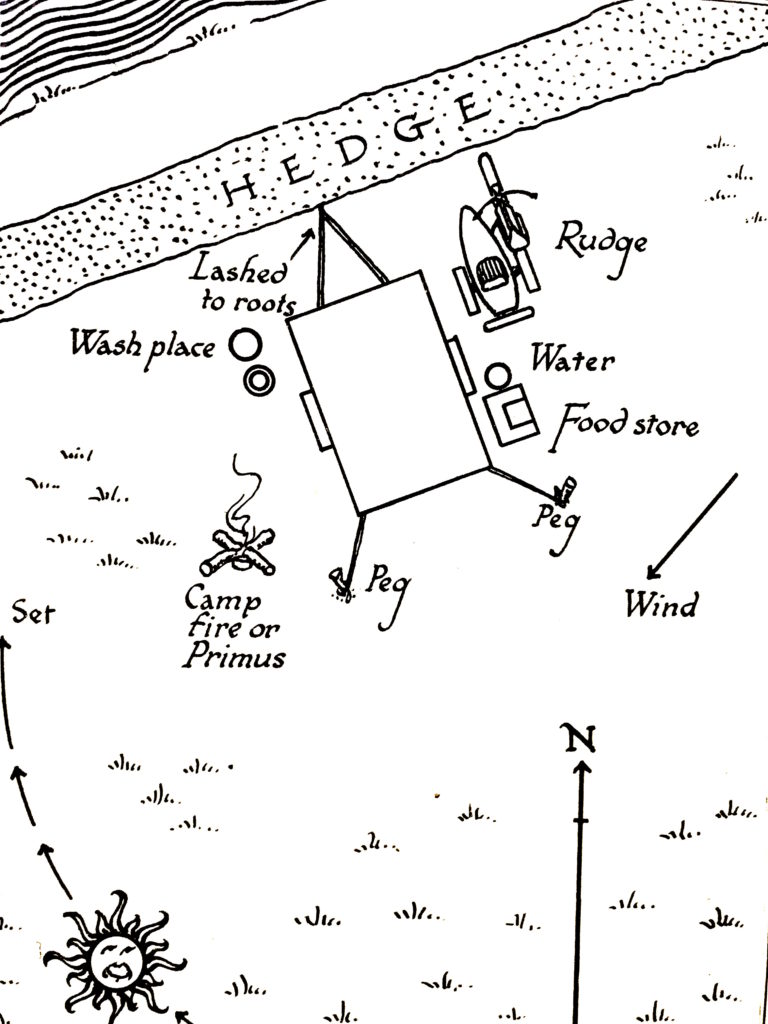
In 1927, Rudge-Whitworth published the ‘Rudge Book of the Road’, which explains in detail their philosophy of touring, camping, and competing on your Rudge motorcycle. This book is a gem, and quite a few copies are still floating around. If you’re a fan of 1920’s vernacular writing, this little 150-page booklet tickles the reader with an optimistic yes-you-can! style, and is illustrated with adorable Art Deco end pages and illustrations, as well as photographs of Rudges in action, weather advice with cloud identification, maintenance tips, mileage charts, a spot of Latin tutoring, and a full 25-page atlas of Britain at the back. It is achingly good reading for a nostalgist; you’ll want to find the nearest Rudge dealer – today! – and go explore the halcyon lanes of a world gone by.
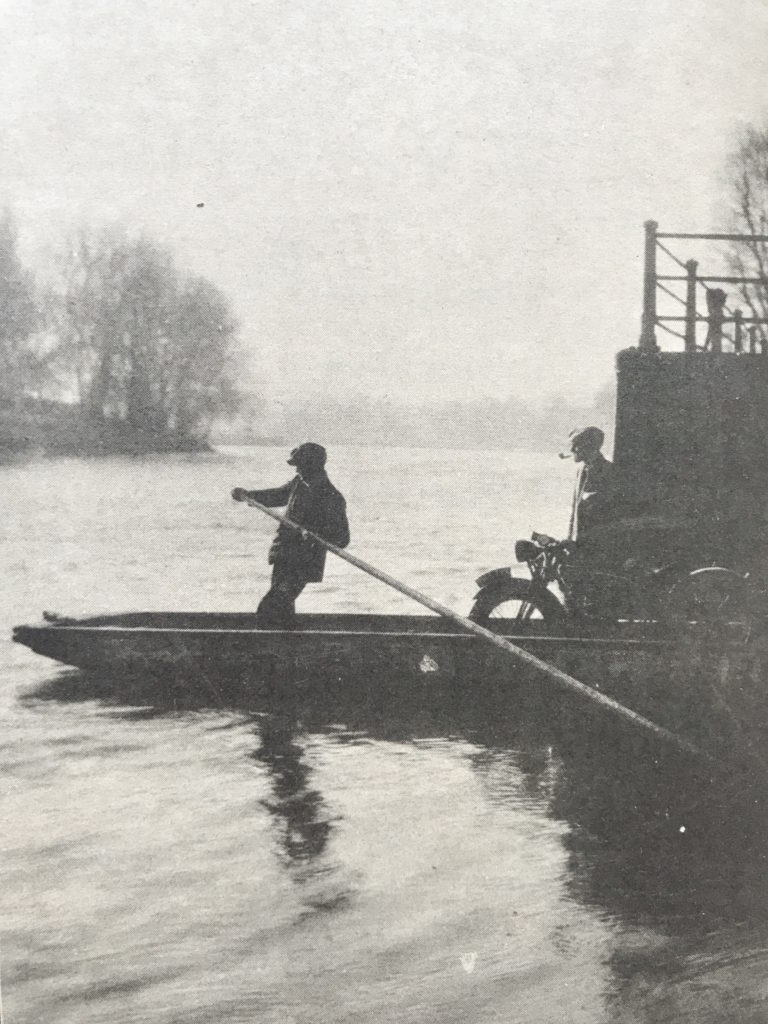

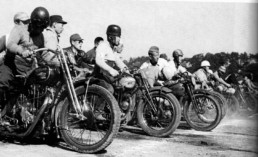
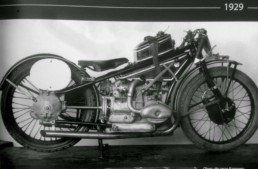
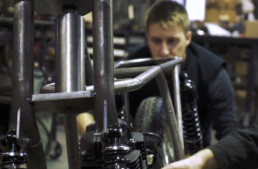
All good sound advice to contemplate on in those days as you took a draw on your briar pipe with a wad of rough shag glowing comfortlingly, no haters.
Just bought a copy. If I had a time machine I’d be dialling up 1927. Every page is a delight. How times have changed, sadly.